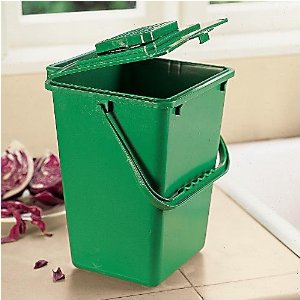Vegetables were not always a love of mine. As a child, I would gag at the sight of green beans, and one Christmas I bent over the trashcan throwing up my aunt’s fried okra that my mom made me eat.
In my older, mature state, I am now quite fond of vegetables, but gardening still intimidates me. I am planning a cross-country move soon, and with that, I am determined to garden inside and/or on the balcony of my new apartment. But, where to begin?
As I researched composting, I found you can recycle cereal, apple cores, onion skin, pasta, old milk, stale chips and bread, tea bags, seeds, orange rinds, banana peels, coffee filters, nuts, leaves, flowers and moldy cheese. I expected that these materials were compostable, but there are a lot of compostable items that almost made me choke on my coffee. Did you know you could also compost junk mail; cardboard from cereal boxes, toilet paper, paper towel rolls and tampon applicators (shred them first so they will break down easily); hair; fingernail clippings; old socks and underwear (as long as they are all cotton); dirt; dryer lint; labels, stickers and price tags; and even latex condoms?
It seems that composting will not only lighten my trash load, but will also reduce some items that I normally recycle.
LA County, where I’m moving, offers gardening workshops for beginning and advanced gardening residents. Most of the classes are free, and some classes have backyard composting bins available for $40. Once I get settled, I plan on attending a workshop to meet other new gardeners and learn the tricks to successful composting. (Check out the EPA’s Composting Where You Live map for more information.)
Gaiam sells a 5.5-quart compost bucket that comes with a three-month carbon filter for $20. There are much more costly compost systems, but I believe this one will be sufficient for my first run at composting. This bucket needs to be emptied weekly.
Choosing plants
I know that I will have limited space for my new garden, and I will obviously have to keep plants in containers. So, which vegetables and herbs will thrive on balconies? The obvious ones that keep popping up are tomatoes, hot and bell peppers, herbs, eggplant and salad greens. I also found that you can grow carrots, cabbage, kale, beets, bush squash, bush cucumbers, strawberries, blueberries, blackberries, cilantro, basil, oregano, bunching onions and more. Once I see my new balcony, I will choose vegetables, herbs and fruits according to how much light is available. I also read that balcony gardening can sometimes be easier than planting vegetables in the ground because you can directly control how much sunlight, water and drainage the plant gets. If you need more drainage, poke holes in the bottom of the container. If your plant is getting too much sunlight, move it inside for a bit.Learning to compost
I know you can compost eggshells, coffee grounds and pizza crusts, but what else is acceptable composting material?
- Gaiam’s kitchen compost bin makes it easy to compost inside your home.